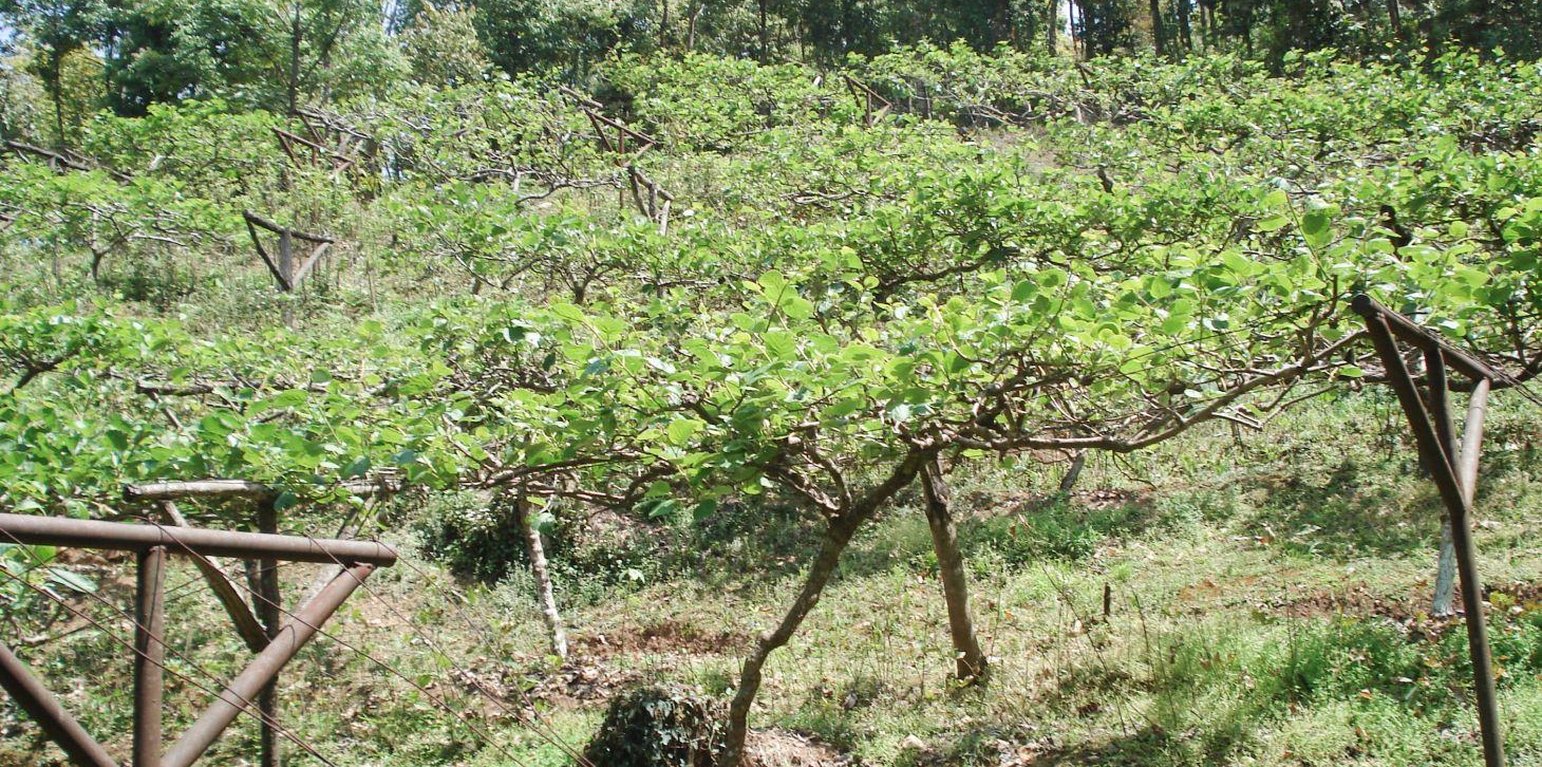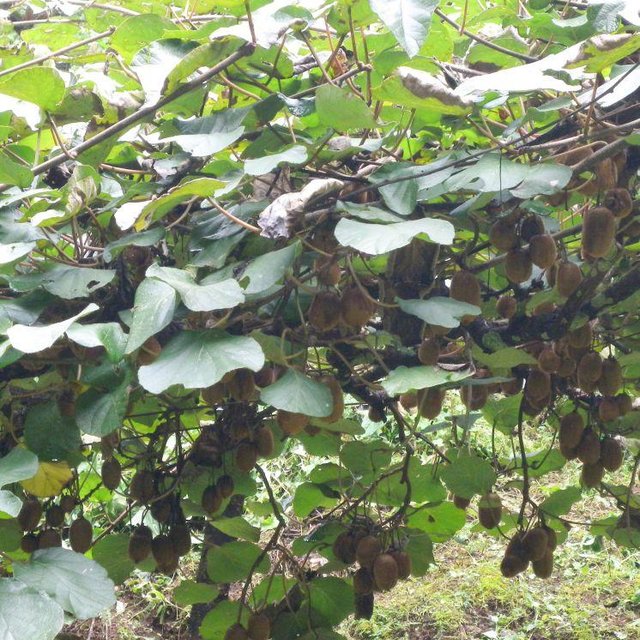



The kiwi fruit is native to China. Previously called Chinese gooseberry, it is now more commonly known by its marketing name of kiwi fruit. Kiwi fruits grow on large vines that are similar to grapevines in their general growth and fruiting habits as well as their training and trellising requirements. The fruit normally ripens within 25 weeks after the flowers first appear. The fruits range in weight from 40 to 90 g and can be picked shortly after the first frost in autumn; after that, they can be kept in cold storage for 4–6 months at oC. Kiwi vines can be grown on a wide range of soil types at elevations ranging from 1000 m to 2500 m. The kiwi plant is dioecious, meaning individual plants are either male or female. Only female plants bear fruit, but only when pollinated by a male plant. Vines of both sexes are essential for fruit production, and they must flower at the same time to ensure pollination. One male pollinator vine is required for eight female vines. The vines are commonly supported on sturdy structures strong enough to bear the heavy fruit, which might otherwise break the rather weak vines. T-bars or hitching post trellises are recommended to support the large fruiting area in the form of a canopy and provide easy access to the fruit.
Establishment / maintenance activities and inputs: Seedlings can be planted in the spring as soon as there is little chance of frost. Vines need to be pruned both in summer and in winter to maintain a balance between kiwi plant growth and profitable fruit production. Excessive plant growth is removed during the growing season to keep the kiwi canopy open and to remove non-fruiting wood. Harvesting can begin from the end of November. Frequent weeding is required to reduce competition for moisture and fertilizer. Kiwi fruit requires abundant water; during the dry season the newly planted kiwi vines need deep watering once a week.
الموقع: Lalitpur District, النيبال
عدد مواقع تنفيذ التقنيةالتي تم تحليلها:
انتشار التقنية: منتشرة بالتساوي على مساحة (0.01 km²)
في منطقة محمية بشكل دائم؟:
تاريخ التنفيذ:
نوع التقديم





| تحديد المدخلات | الوحدة | الكمية | التكاليف لكل وحدة (دولار أمريكي USD) | إجمالي التكاليف لكل مدخل (دولار أمريكي USD) | % من التكاليف التي يتحملها مستخدمو الأراضي |
| العمالة | |||||
| Prepare pits and seedlings | persons/day/ha | 136,0 | 3,6765 | 500,0 | |
| المواد النباتية | |||||
| Planting material | ha | 1,0 | 1500,0 | 1500,0 | |
| الأسمدة والمبيدات الحيوية | |||||
| Compost / manure | ha | 1,0 | 150,0 | 150,0 | |
| مواد البناء | |||||
| Iron pole | ha | 1,0 | 3500,0 | 3500,0 | |
| إجمالي تكاليف إنشاء التقنية | 5'650.0 | ||||
| إجمالي تكاليف إنشاء التقنية بالدولار الأمريكي | 5'650.0 | ||||
| تحديد المدخلات | الوحدة | الكمية | التكاليف لكل وحدة (دولار أمريكي USD) | إجمالي التكاليف لكل مدخل (دولار أمريكي USD) | % من التكاليف التي يتحملها مستخدمو الأراضي |
| العمالة | |||||
| Maintenance and prunning | persons/day/ha | 122,0 | 3,6885 | 450,0 | |
| معدات | |||||
| Secateurs | ha | 1,0 | 50,0 | 50,0 | |
| Binding wire | ha | 1,0 | 650,0 | 650,0 | |
| الأسمدة والمبيدات الحيوية | |||||
| Compost / manure | ha | 1,0 | 150,0 | 150,0 | |
| إجمالي تكاليف صيانة التقنية | 1'300.0 | ||||
| إجمالي تكاليف صيانة التقنية بالدولار الأمريكي | 1'300.0 | ||||
Kiwi is considered an elite fruit and it is usually too expensive for local consumption
Kiwi production can be a good source of cash income as it is a high value crop. Kiwi fruit is high in nutrients, eating kiwis has been show to boost the immune system, to help regulate blood pressure, and to be beneficial for cardiac patients